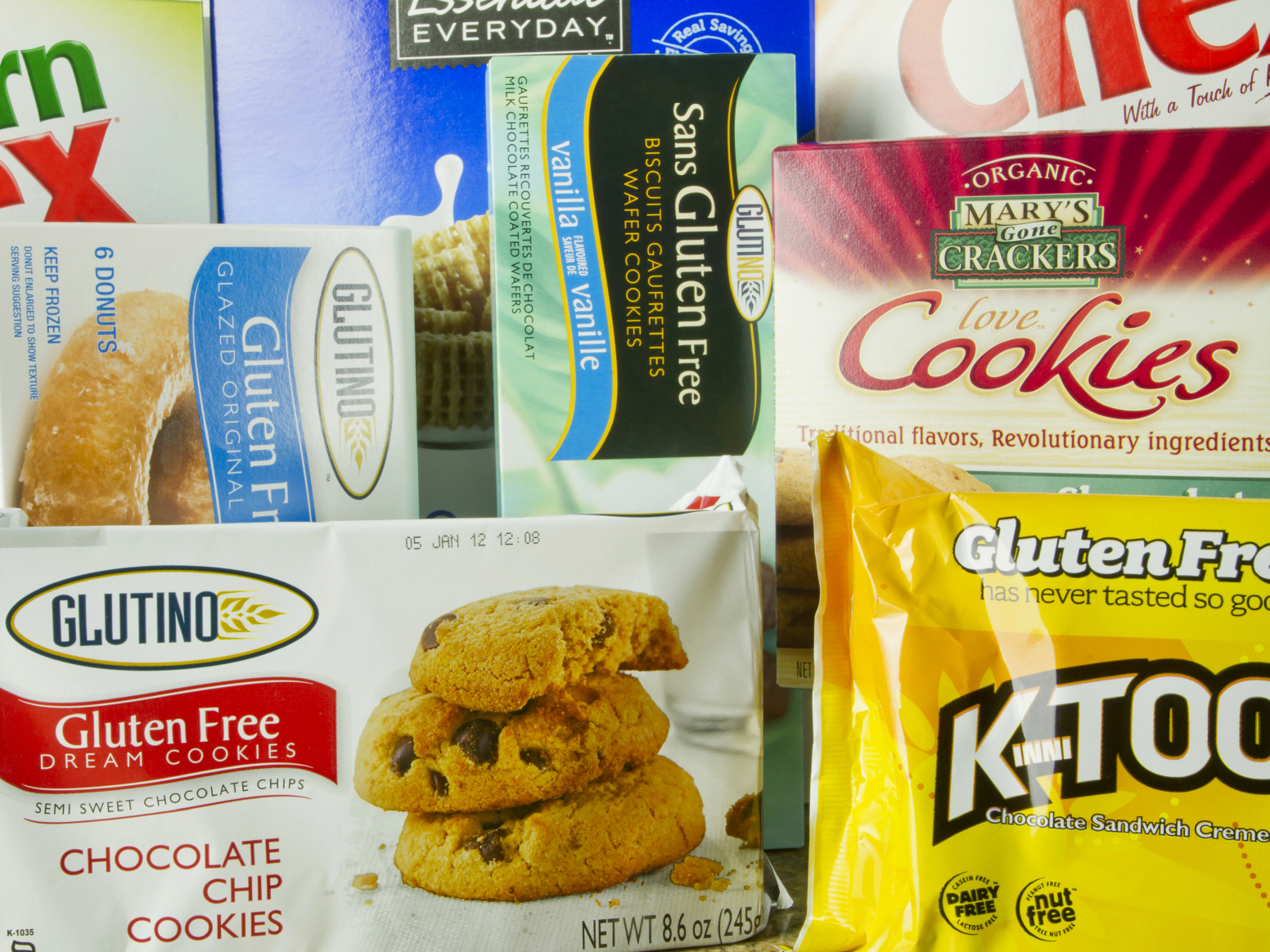The rule states that foods may be labeled "gluten-free" only if there's less than 20 parts per million of the protein.
The new regulation is aimed at protecting people with celiac disease, a chronic autoimmune disorder that can destroy the lining of the small intestine.
Flare-ups of the disease can be set off by the consumption of even small amounts of gluten, which is found in wheat, barley and a few other grains. The FDA estimates that it affects about 3 million Americans.
"We're really celebrating," Beth Hillson tells The Salt. She founded Gluten Free Pantry, now part of the company Glutino, after being diagnosed with celiac. She also heads the American Celiac Disease Alliance.
As the gluten-free trend has spread, lots of manufacturers have used the label as a marketing tool. The concern within the celiac community has been that food companies had become sloppy, printing "gluten-free" on packages of food that weren't truly free of the protein.
As an anti-wheat sentiment has grown in the U.S., fueled by best-selling books like William Davis' Wheat Belly, there are more people interested in knowing exactly what's in their food — even if it's trace amounts of gluten.
And though there's debate about who can benefit from a gluten-free diet, many mainstream doctors acknowledge that some people with wheat intolerance, particularly those prone to gastrointestinal distress, do better when they eliminate or limit it in their diet.
But the idea that wheat, the top grain source of gluten in the American diet, is somehow bad for all of us, doesn't hold up.
As we've reported, Daniel Leffler, a gastroenterologist at Beth Israel Deaconess Medical Center, says "there's good evidence that the vast majority of people actually do just fine with wheat."
So, for most of us, focusing on a healthy pattern of eating is likely more important than trying to avoid one food.
Copyright 2014 NPR.
